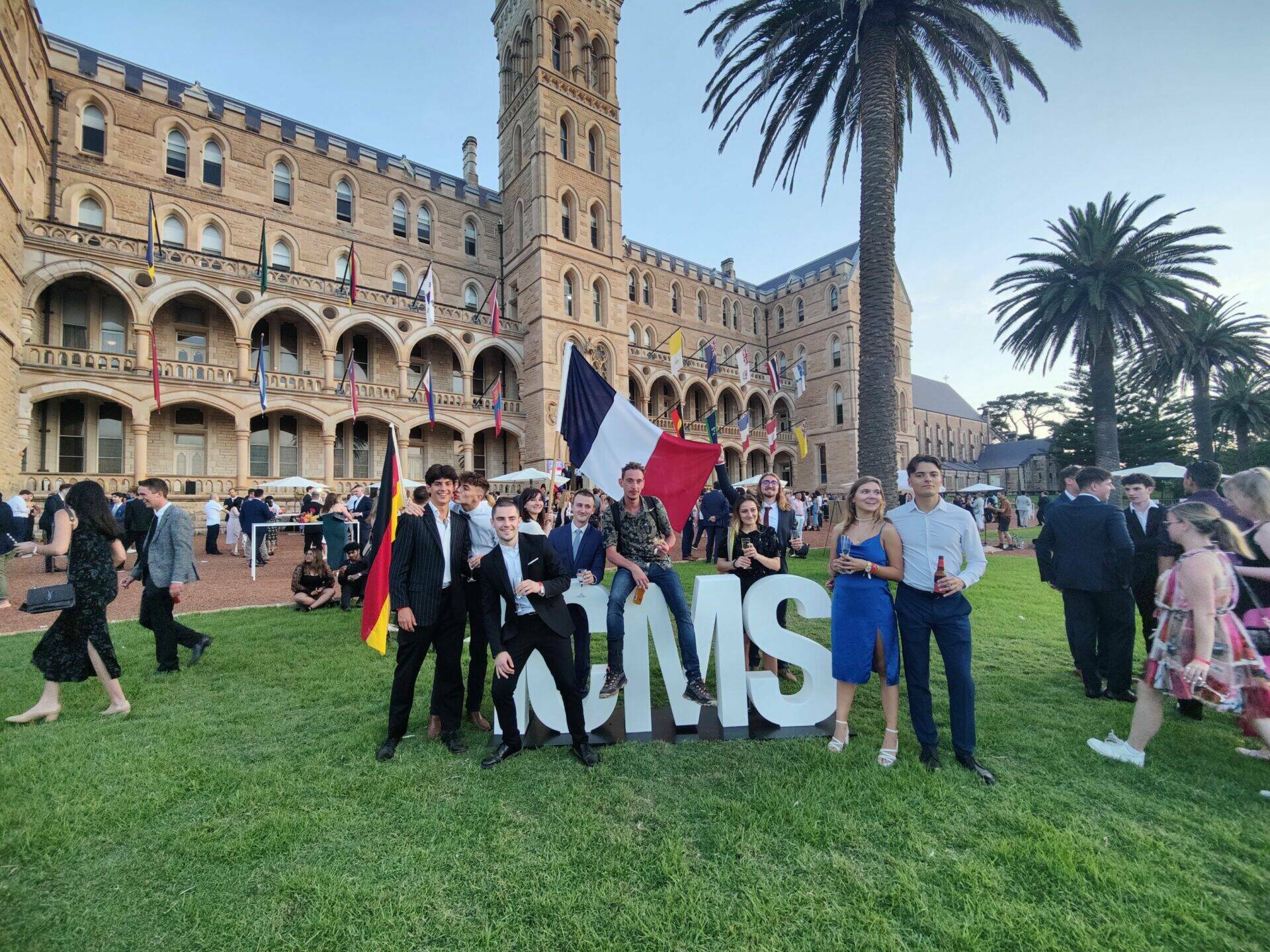Merchandising Manager
HOW TO BECOME A MERCHANDISING MANAGER
Merchandising is a source of income for sports clubs. Merchandising manager is a key role to help increase sales and stay abreast of the competition. It is a retail and sales job.
What is merchandising applied to sports?
This term is part of the marketing vocabulary. It represents all the techniques used to optimize and display products for sale at a point of sale, usually a store.
Sports merchandising represents all products derived from a club. It represents around 8% of a club’s revenue. For major sports retailers and sports brands, merchandising plays a vital role in boosting sales. For clubs, sales take place at major events, in official club boutiques and in retail outlets.
In a context of business sport and new ways of consuming, merchandising is evolving and must adapt to new trends. In-store footfall has fallen, while online sales have soared.
What are the duties of a merchandising manager?
Although merchandising managers manage a team, they report to their employer’s marketing department. Their main duty is to attract new customers, drive them to buy and showcase the merchandise for sale.
Together with the marketing and sales director, they implement a strategic merchandising policy to this end. Using data collected by the marketing team, they analyze the target audience and identify its habits. Concurrently, they must monitor the competition to keep abreast of its practices and carry out market research. This preparatory work is key to deciding on store locations, layout, and product presentation.
The policy translates into a series of instructions, that can be likened to a shop’s style guide, to ensure that all retailers offer the same services and visual identity (colors, furniture type, featured products, etc.).
In the spirit of openness, merchandising managers must provide sales reports to their marketing manager to evaluate the success of their strategy. Then, they can work together to redefine areas for development or improvement. This will help adapt the merchandising policy to address any identified issues.
Designing club shop layouts and window displays are an important part of their work. These must be compelling and encourage customers to buy. They are also in charge of pop-up store displays. Together with the product manager and department manager, they promote certain products over others, in line with a prior analysis of customer trends and needs. They may work with vendors to choose specific layouts, such as consultancies, interior decorators, decorators and hire promotion staff for product launches or promotional events. Merchandising managers are also responsible for placing orders with furniture suppliers for in-store product display equipment.
Although they must comply with corporate identity, merchandisers may proceed to a number of adjustments, especially when the company is developing on the international market and the target audience is foreign. In fact, to sell, they must adapt to local culture and habits.
What are the required qualities for this role?
This job requires extensive expertise of the sports market. In addition, merchandisers must:
- Demonstrate analytical skills: ideating the right layout requires a great amount of preparatory work, in particular regarding the target audience. They must carry out in-depth analysis of the customers’ habits, tastes, consumption patterns, etc.
- Be creative: Like the marketing team, merchandisers must come up with innovative ideas. In a highly competitive market, it is important to stand out from the crowd. Among other things, they must demonstrate a flair for aesthetics and creativity.
- Keep abreast of new trends: to cater to a precise target group, they must be up to date on the latest tools or innovations that could be of use to the brand. For instance, they must be aware of the importance of word-of-mouth, social networks, creating buzz or designing instagrammable spots, for examples.
- Enjoy working in the field: they are often required to work in the field to make sure that the agreed policy is correctly implemented, specifically POS information and POS advertising. Although they work in part from their office, they must often travel to national and international shops.
- Be computer savvy: the use of merchandising and geomarketing is highly recommended to assist their work.
How much do merchandising managers earn? What are their career prospects?
Compensation depends on several factors: the company, number of direct reports, number of shops, etc. At the beginning of their career, they can expect to earn around €2,500 gross monthly. Salaries will quickly climb for merchandisers working for a large club or a well-known sports equipment manufacturer.
Merchandising managers can easily switch sports. Thanks to their experience, they can also turn to marketing or sales, and work in trade marketing. After completing additional training, they may move on to become e-commerce manager, which is the same job, but on the Internet.
What are the qualifications required for becoming a merchandising manager?
This profession requires in-depth knowledge of the sports sector. The 3-year Bachelor’s degree in Sports Marketing and Events combines operational skills in a company and the sports sector. This professional training program enables students to study the different specificities of the sports target. Before becoming a merchandising manager, graduates can gain initial experience in sales or distribution in general.
Alternatively, the 5-year Global Sport Business Master is another option. Graduates with a 5-year degree can quickly move up the ladder to become Merchandising Manager. These extra two years give students the more advanced skills needed by a manager.
This term is part of the marketing vocabulary. It represents all the techniques used to optimize and display products for sale at a point of sale, usually a store.
Sports merchandising represents all products derived from a club. It represents around 8% of a club’s revenue. For major sports retailers and sports brands, merchandising plays a vital role in boosting sales. For clubs, sales take place at major events, in official club boutiques and in retail outlets.
In a context of business sport and new ways of consuming, merchandising is evolving and must adapt to new trends. In-store footfall has fallen, while online sales have soared.
Although merchandising managers manage a team, they report to their employer’s marketing department. Their main duty is to attract new customers, drive them to buy and showcase the merchandise for sale.
Together with the marketing and sales director, they implement a strategic merchandising policy to this end. Using data collected by the marketing team, they analyze the target audience and identify its habits. Concurrently, they must monitor the competition to keep abreast of its practices and carry out market research. This preparatory work is key to deciding on store locations, layout, and product presentation.
The policy translates into a series of instructions, that can be likened to a shop’s style guide, to ensure that all retailers offer the same services and visual identity (colors, furniture type, featured products, etc.).
In the spirit of openness, merchandising managers must provide sales reports to their marketing manager to evaluate the success of their strategy. Then, they can work together to redefine areas for development or improvement. This will help adapt the merchandising policy to address any identified issues.
Designing club shop layouts and window displays are an important part of their work. These must be compelling and encourage customers to buy. They are also in charge of pop-up store displays. Together with the product manager and department manager, they promote certain products over others, in line with a prior analysis of customer trends and needs. They may work with vendors to choose specific layouts, such as consultancies, interior decorators, decorators and hire promotion staff for product launches or promotional events. Merchandising managers are also responsible for placing orders with furniture suppliers for in-store product display equipment.
Although they must comply with corporate identity, merchandisers may proceed to a number of adjustments, especially when the company is developing on the international market and the target audience is foreign. In fact, to sell, they must adapt to local culture and habits.
This job requires extensive expertise of the sports market. In addition, merchandisers must:
- Demonstrate analytical skills: ideating the right layout requires a great amount of preparatory work, in particular regarding the target audience. They must carry out in-depth analysis of the customers’ habits, tastes, consumption patterns, etc.
- Be creative: Like the marketing team, merchandisers must come up with innovative ideas. In a highly competitive market, it is important to stand out from the crowd. Among other things, they must demonstrate a flair for aesthetics and creativity.
- Keep abreast of new trends: to cater to a precise target group, they must be up to date on the latest tools or innovations that could be of use to the brand. For instance, they must be aware of the importance of word-of-mouth, social networks, creating buzz or designing instagrammable spots, for examples.
- Enjoy working in the field: they are often required to work in the field to make sure that the agreed policy is correctly implemented, specifically POS information and POS advertising. Although they work in part from their office, they must often travel to national and international shops.
- Be computer savvy: the use of merchandising and geomarketing is highly recommended to assist their work.
Compensation depends on several factors: the company, number of direct reports, number of shops, etc. At the beginning of their career, they can expect to earn around €2,500 gross monthly. Salaries will quickly climb for merchandisers working for a large club or a well-known sports equipment manufacturer.
Merchandising managers can easily switch sports. Thanks to their experience, they can also turn to marketing or sales, and work in trade marketing. After completing additional training, they may move on to become e-commerce manager, which is the same job, but on the Internet.
This profession requires in-depth knowledge of the sports sector. The 3-year Bachelor’s degree in Sports Marketing and Events combines operational skills in a company and the sports sector. This professional training program enables students to study the different specificities of the sports target. Before becoming a merchandising manager, graduates can gain initial experience in sales or distribution in general.
Alternatively, the 5-year Global Sport Business Master is another option. Graduates with a 5-year degree can quickly move up the ladder to become Merchandising Manager. These extra two years give students the more advanced skills needed by a manager.






